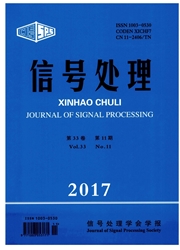

 中文摘要:
中文摘要:
针对基于消息传递算法的节点定位方法复杂度和通信开销较高的问题,提出一种适用于节点可移动网络的低复杂度低协作开销的节点自定位算法。为降低通信负载,该算法将消息约束为高斯型函数,网络中只需传输各消息的均值和方差,并采用适用于指数模型的变分消息传递(VMP)算法以降低计算复杂度。首先,根据节点的历史轨迹对节点位置进行预测,得到当前时刻的先验信息。然后,在因子图上按照VMP消息更新规则、通过迭代近似求解节点位置变量的后验分布。在消息更新中,对于非线性测距模型引起的非高斯置信,通过非线性项的二阶泰勒级数展开将其近似为高斯型函数。最后,根据最大后验估计准则得到位置估计。仿真结果表明,该算法的定位精度与基于非参数化置信传播的SPAWN(Sum-Product Algorithm over a Wireless Network)接近,但计算复杂度和通信负载均显著降低。
 英文摘要:
英文摘要:
Concerning the high computational complexity and communication overhead of message passing-based localization methods, a self-localization algorithm with low complexity and communication overhead is proposed for wireless networks with mobile sensors. To decrease the communication overhead, all the messages were restrained to be Gaussian functions. Consequently, only the means and variances need to be transmitted in the network, and variational message passing (VMP) algorithm is employed to reduce computational complexity for it is suitable for exponential models. Firstly, location prediction is performed according to historical trajectories and the a-priori distributions of the sensors' positions are ob- tained. Then, the marginal a-posteriori distributions of the positions are iteratively calculated by using the VMP message update rules on factor graphs. During the messages update, the non-Gaussian beliefs caused by nonlinear ranging model were approximated to Gaussian probability distribution function (pdf) by expanding the nonlinear terms with second-order Taylor series. Finally, the positions of the sensors can be estimated based on maximum a posteriori estimation. Simulation results show that the performance of the proposed algorithm is close to sum-product algorithm over a wireless network (SPAWN) with much lower communication overhead and computational complexity.
 同期刊论文项目
同期刊论文项目
 同项目期刊论文
同项目期刊论文
 期刊信息
期刊信息
